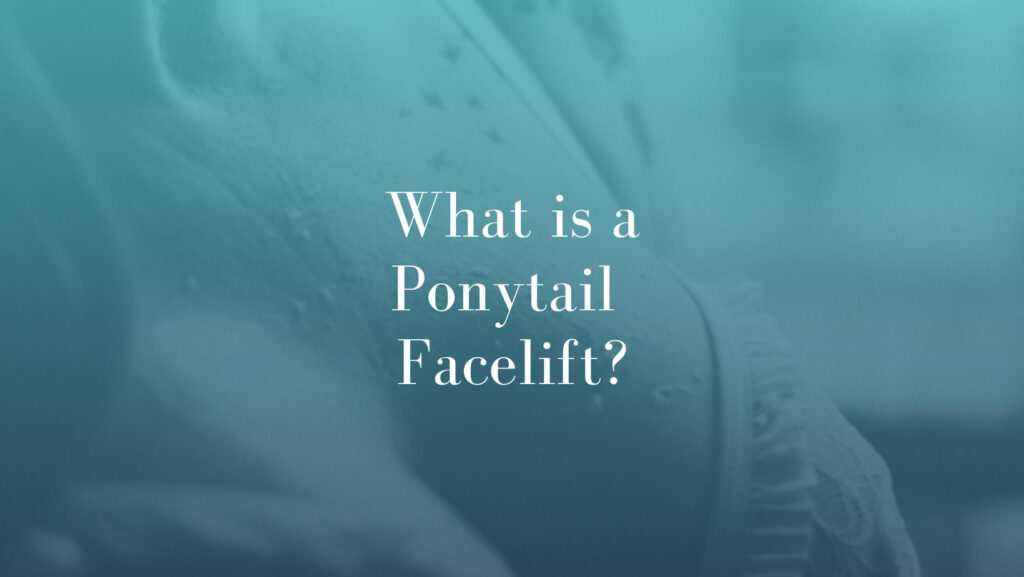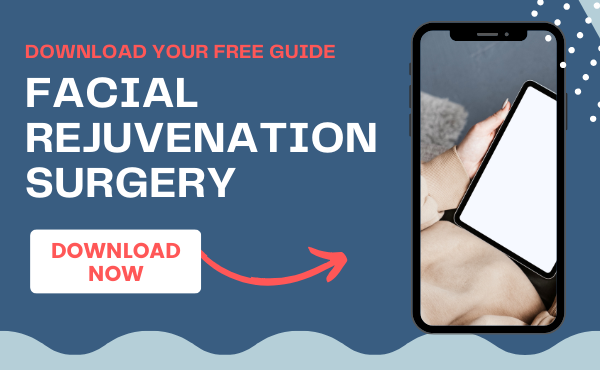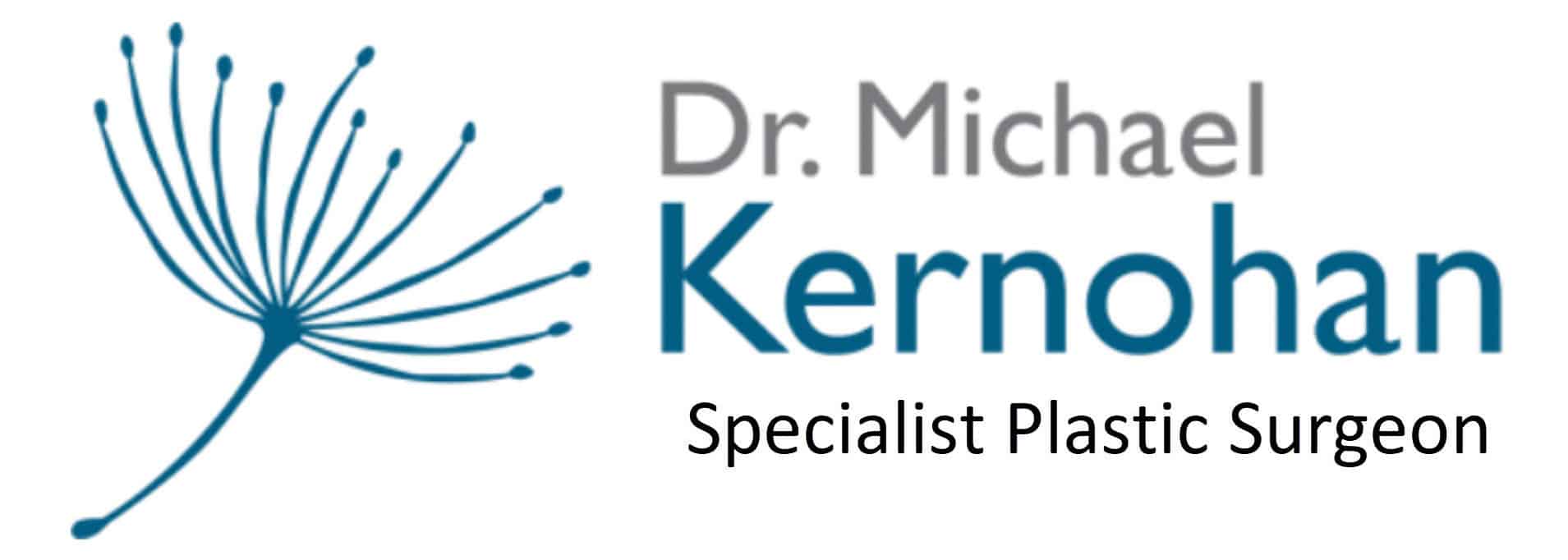
A Less Invasive Facelift for Natural-Looking Results
The ponytail facelift is a cutting-edge, short scar surgical procedure for those seeking a less aggressive approach to facial rejuvenation. This innovative technique (technically known as Rhytidectmy or Meloplasty) focuses on lifting and repositioning the facial tissues, aims for the result of a subtle, natural-looking lift that mimics the effect of pulling the hair back into a ponytail. By avoiding the extensive incisions and skin removal associated with traditional facelifts, the ponytail facelift presents a unique solution for individuals who desire a refreshed appearance without undergoing major surgery.
Dr Michael Kernohan is a Specialist Plastic Surgeon performing different face procedures in Sydney and Southwest Suburbs.
Download Dr Michael Kernohan Facial Rejuvenation Guide

What Is a Ponytail Facelift?
The origin of the name “ponytail facelift” can be traced back to the visual similarity between the procedure’s desired results and the tightened, lifted appearance one gets when pulling their hair back into a ponytail. This catchy term was coined to help describe the technique in a way that is easily relatable and understandable to potential patients. The incisions for the procedure are also strategically placed within the hairline, further reinforcing the connection between the surgical technique and the well-known hairstyle. As a marketing term, “ponytail facelift” effectively conveys the idea that the procedure may deliver the appearance of a fresher look achieved through a less invasive, more subtle approach than traditional facelifts.
This plastic surgery procedure offers a permanent solution without causing hair damage. The primary objective of a ponytail lift is to elevate the midface, which includes the cheek, lower eyelid, and temple region. The procedure involves small, concealed incisions behind the hairline and tightening of facial tissues using sutures.
An endoscope is often employed during the procedure, allowing for a short scar approach to manipulate the tissues. It’s crucial to remember that “ponytail lift” is not an official medical term, so discussing your desired outcomes with your surgeon will help determine the most suitable procedure for your needs.
Ponytail Facelift – The Surgical Approach
- Incisions: Your surgeon will make small incisions hidden within the hairline, typically around the temples and sometimes behind the ears. These incisions allow access to the underlying facial tissues without leaving visible scars
- Lifting and repositioning: The surgeon will use specialised sutures to lift and reposition the facial tissues, focusing on the midface, cheeks, and the lower eyelid area. The sutures are anchored to the deep tissue layers, providing support and achieving a natural, lifted appearance
- Endoscopic assistance: In some cases, your surgeon may use an endoscope (a thin, flexible tube with a light and camera) to help visualise and manipulate the facial tissues in a minimally invasive manner
- Closing the incisions: Once the desired lift and repositioning have been achieved, the surgeon will close the incisions using sutures, adhesive tape, or clips
- Recovery: Following the procedure, patients may experience some mild discomfort, swelling, and bruising. However, the recovery time for a ponytail facelift is generally faster than that of a traditional facelift, and most patients can return to their daily activities within a week
Ponytail Facelift vs. Traditional Facelift
A ponytail facelift looks different from a regular facelift mainly in terms of the incisions and the results. A ponytail facelift has smaller and more hidden incisions around the hairline and temples, while a regular facelift has longer and more visible scars around the ear and into the scalp. A ponytail facelift also focuses on lifting the midface and creating a more defined cheekbone area, while a regular facelift can address the lower face, neck, and jowls as well. A ponytail facelift is better suited for younger patients with early signs of ageing who don’t have much excess skin, while a regular facelift is better suited for older patients with more loose skin and volume loss.
Benefits of Ponytail Facelift Procedure
The ponytail facelift offers several benefits, making it an appealing option for those seeking facial rejuvenation. Some of these benefits include:
- Short Scar: The ponytail facelift requires smaller incisions compared to traditional facelifts, reducing the risk of poor scarring and complications
- Natural results: The procedure focuses on lifting and repositioning facial tissues, providing a subtle and natural-looking lift that mimics the effect of a ponytail hairstyle
- Faster recovery: The recovery time for a ponytail facelift is generally shorter than that of a traditional facelift, allowing patients to return to their daily activities within a week
- Less downtime: With reduced swelling, bruising, and discomfort, patients can resume normal activities sooner compared to more invasive procedures
- Suitable for mild to moderate ageing: The ponytail facelift is ideal for individuals with mild to moderate skin laxity who may not yet require a full facelift or prefer a less invasive option
- Lower risk of complications: As a less invasive procedure, the ponytail facelift has a lower risk of complications, such as infection or nerve damage, compared to traditional facelifts
- Concealed incisions: Incisions are strategically placed within the hairline, reducing the visibility of any scarring
By offering a more subtle and less invasive approach to facial rejuvenation, the ponytail facelift has become a popular choice for individuals seeking a refreshed appearance.
Who Is a Good Candidate for A Ponytail Facelift?
In general, good candidates for a ponytail facelift are individuals who:
- Are in good overall health: The candidate should be in good overall health, with no underlying medical conditions that could affect their ability to undergo surgery or heal properly after the procedure.
- Have mild to moderate sagging or looseness in the lower face and neck: The procedure is designed to address mild to moderate sagging in the lower face and neck, so individuals with more significant sagging or looseness may require a more extensive procedure.
- Have realistic expectations: It’s important for the candidate to have realistic expectations about the outcome of the procedure and to understand that a ponytail facelift can provide a subtle improvement, rather than dramatic results.
- Do not smoke: Smoking can increase the risk of complications during and after the surgery, so candidates should be non-smokers or be willing to quit smoking for a period of time before and after the procedure.

Recovery Time: Managing Pain and Bruising After a Ponytail Facelift
After the surgery, you can expect to experience some pain, swelling, and bruising around the surgical site. The amount of discomfort can vary. Recovery time can also vary, but most patients can expect to take about two weeks off from work or other activities to allow their bodies to heal.
Recovery Time: Recovery time after a ponytail facelift can vary depending on several factors, such as the extent of the surgery, the patient’s age and overall health, and their adherence to post-operative instructions. In general, patients can expect to take about two weeks off from work or other daily activities to allow their bodies to heal. During this time, patients should avoid any strenuous activities or heavy lifting, as these can increase the risk of bleeding and swelling.
After the first two weeks, patients can gradually resume their normal activities, but should still avoid any strenuous exercise or heavy lifting for at least six weeks after the surgery.
Managing Pain: Pain after a ponytail facelift is common and can be managed with pain medication prescribed by your surgeon. Patients may experience discomfort, swelling, and bruising around the surgical site, but these symptoms should gradually improve over time. It’s important to take any prescribed pain medication as directed and to avoid any activities that can increase pain or discomfort.
Reducing Bruising: Bruising is a common side effect of a ponytail facelift and can occur around the surgical site. Bruising typically peaks within three to five days after the surgery and can take up to two weeks to resolve. Patients can reduce the severity and duration of bruising by applying ice packs to the surgical site for the first 48 hours after the surgery and by avoiding any activities that can increase blood flow to the face.

FAQs about Ponytail Facelift
What happens during a ponytail lift?
- During the procedure, general anaesthesia is administered to ensure the patient is comfortable. The surgeon will then make an incision around the ears, starting at the temple and extending to the back of the ear, and lift and tighten the skin and underlying muscles in the lower face and neck. Once the lifting is complete, your surgeon will carefully suture the incisions closed and apply bandages to the surgical site to protect it. The entire procedure typically takes less than 1-2 hours, and patients will need to rest for several days after the surgery and avoid any strenuous activity or heavy lifting for several weeks to ensure proper healing.
Is a ponytail facelift painful?
- Patients can expect some pain and discomfort after a ponytail facelift, but this can be managed with pain medication prescribed by Dr Kernohan. Most patients report that the pain is manageable and improves over time.
How long does the procedure take?
- A ponytail facelift typically takes less than 1-2 hours to complete, depending on the extent of the procedure and whether other procedures are being performed at the same time.
What is the recovery time after a ponytail facelift?
- After a ponytail facelift, patients can expect to take about two weeks off from work or other activities to allow their bodies to heal. In the first few days after the surgery, patients can expect some pain, swelling, and bruising around the surgical site. The surgeon will likely prescribe pain medication to manage any discomfort, and patients should also apply ice packs to the surgical site to help reduce swelling. During the first week after the surgery, patients should rest as much as possible and avoid any activities that could strain the face or neck. After the first week, patients can begin to resume light activities, but they should still avoid any strenuous exercise or heavy lifting for at least six weeks after the surgery.
Are the results of a ponytail facelift permanent?
- While the results of a ponytail facelift can be long-lasting, they are not considered permanent. The natural ageing process will continue, and over time, the effects of the surgery will gradually diminish. The longevity of the results will vary from person to person and depend on factors such as age, skin quality, and lifestyle habits. Generally, younger patients with good skin elasticity and healthy lifestyle habits can expect longer-lasting results than older patients with more significant signs of ageing. It’s important to note that a ponytail facelift cannot stop the ageing process or prevent future signs of ageing. Patients can prolong the results of their surgery by following a healthy lifestyle, avoiding sun exposure, and taking good care of their skin. Additionally, some patients may choose to undergo touch-up procedures to maintain their results as they age.
Further Reading about Face Surgery with Dr Kernohan
- Read Dr Kernohan’s Facelift Surgery Page
- Read Dr Kernohan’s Mini Facelift Surgery Page
- Read Dr Kernohan’s Blog about Recovery after Facelift
- Read Dr Kernohan’s Blog about Ageing Face? – SMAS vs Deep Plane Facelift
- Read Dr Kernohan’s page about Facial Fillers: Non-Surgical Solutions for Facial Concerns
- Read Dr Kernohan’s Blog about Neck Lift Options – Types of Neck Lift Surgery
Medical References about Facelift Surgery
- Facelift – Cleveland Clinic
- Facelift: What You Need to Know – Medical News Today
- Face-lift – Mayo Clinic





